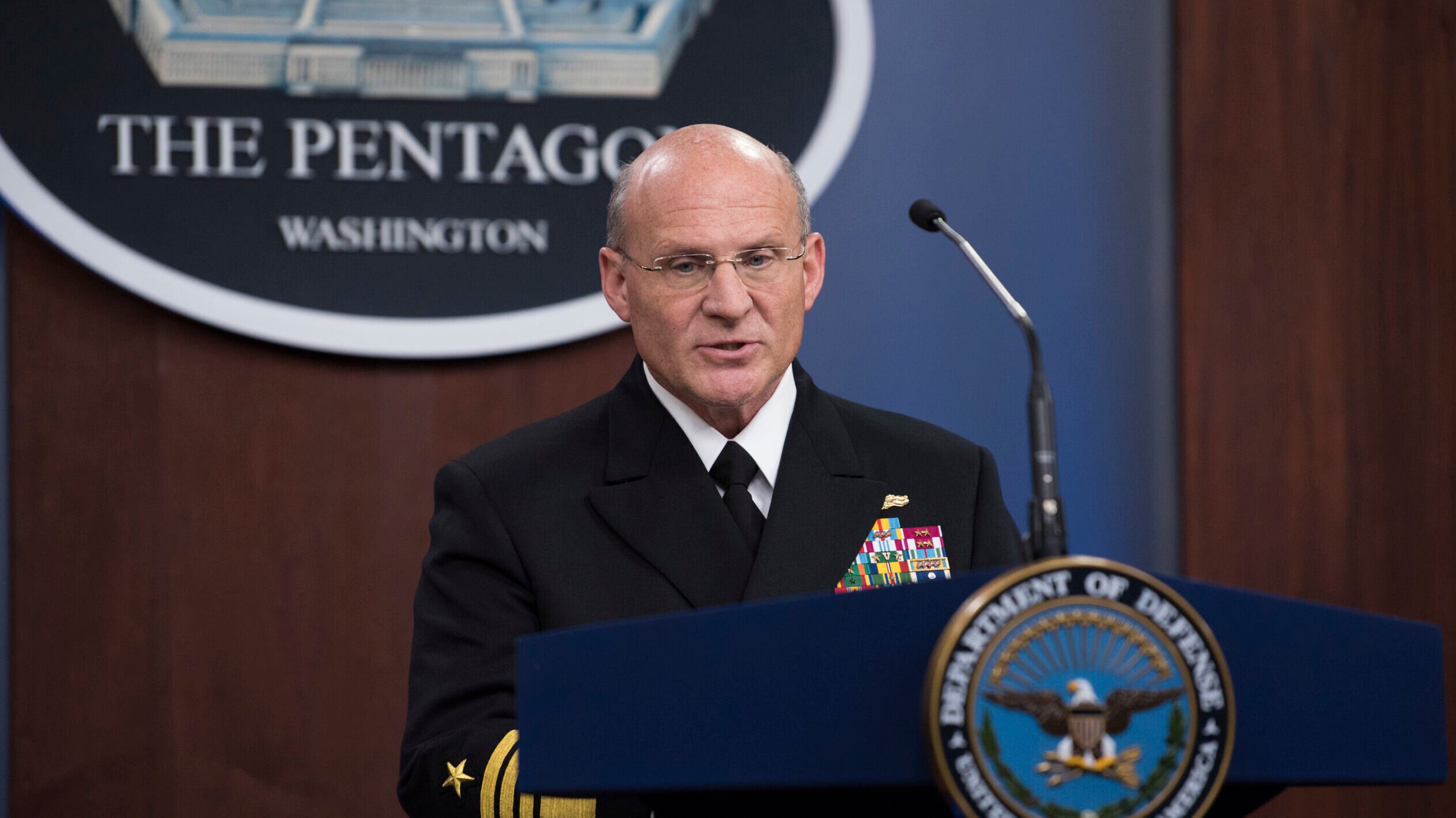
Chief of Naval Operations Adm. Michael M. Gilday speaks at a Pentagon press briefing, Washington, D.C., April 2, 2020. (DoD photo by Lisa Ferdinando)
Updated 3/15/2023 at 5:33 pm to include comments from Marine Corps Commandant Gen. David Berger and HII.
WASHINGTON — The disagreement between the Navy, the Marines and the Pentagon over the future of amphibious warships played out in public today as leaders from both services defended their stances.
“The driving issue here that drove that decision had to do with cost,” Adm. Michael Gilday, chief of naval operations, told attendees at the McAleese Defense Programs conference in Washington, DC. He specifically pointed to projected increases between the first, second and third vessels in the second flight of the class as a reason for concern.
To the vocal dismay of the Marine Corps, the new fiscal 2024 budget takes a strategic pause in buying amphibious ships, potentially truncating the buy for the San Antonio-class amphibious transport docks — if Congress allows it. This week, multiple Pentagon leaders, including Gilday today, said the decision was made chiefly by the Office of the Secretary of Defense, rather than the Navy or Marine Corps.
“The cost of that ship has gone from $1.47 billion [for the first ship] to the second ship at $1.5 [billion]. The third one that we’re contracting for right now is probably going to be between $1.9 and $2 billion,” Gilday said, referring to second flight of the San Antonio-class. “So that increase will be somewhere between 21 and 25 percent… We’re moving in the wrong direction.”
Gilday is the latest senior Navy official to address the decision. Marine Corps Commandant Gen. David Berger publicly declined to explain the decision last week, deferring to Navy Secretary Carlos Del Toro. Navy Undersecretary Erik Raven largely declined to answer questions about the pause in a roundtable with reporters, except to thank Congress for their support. And this week, a Marine Corps spokesman told Breaking Defense the pause threatens to shutdown the production line.
Speaking several hours after Gilday, Berger, the Marine Corps commandant, argued that while the price on paper for each successive ship has increased, prime contractor HII has brought the price down when considering the ships’ costs in “base dollars.” By that, he means when the prices are adjusted to factor out yearly inflation. Put another way: the service chiefs are looking the same numbers in two different ways — a common issue between the services and lawmakers when it comes to Pentagon budgeting.
Berger also said that the first two ships were bought individually, and that if purchased in groups of two or more, the Pentagon could potentially save more money on each individual vessel’s cost.
“If you gave them [HII] several years – a block buy like the [Navy] secretary wants to do, you’re going to see that keep going down because they know how to build them,” he added.
Gilday argued the Navy’s decision was ultimately about protecting taxpayer dollars, including amid construction delays.
“I just mentioned we haven’t put the [third] ship on contract yet. The line is already running behind,” Gilday said.
“So, as a taxpayer, if you want to give the vendor money next year for a ship that they can’t bend metal on,” he continued, cutting himself short before finishing the thought.
HII is the primary contractor for the San Antonio-class. In a statement to Breaking Defense following the fiscal 2024 budget’s release, it said “any disruption in the production line could have a significant impact on the defense industrial base.”
In a statement to Breaking Defense responding to the CNO’s comments, HII Ingalls Shipbuilding spokeswoman Kimberly Aguillard defended the company’s performance on the San Antonio-class program.
“While Ingalls cannot comment on total price to the Navy, over the last five ships this partnership has enabled us to hold the line on shipbuilder cost,” she said. “In 2016, LPD-28 was awarded for $1.47B (shipbuilder cost) and seven years later LPD-32 was negotiated with additional scope for $1.54B (shipbuilder cost), or within 5% of the LPD-28 award. Ingalls is committed to this partnership in support of our customers and country in delivering this powerful capability to the fleet.”
The CNO finished his remarks about the San Antonio-class today by saying the price needs to be “competitive.”
“Actually, with that production line [and] that ship, it’s not competitive when one company builds it,” he added.






















